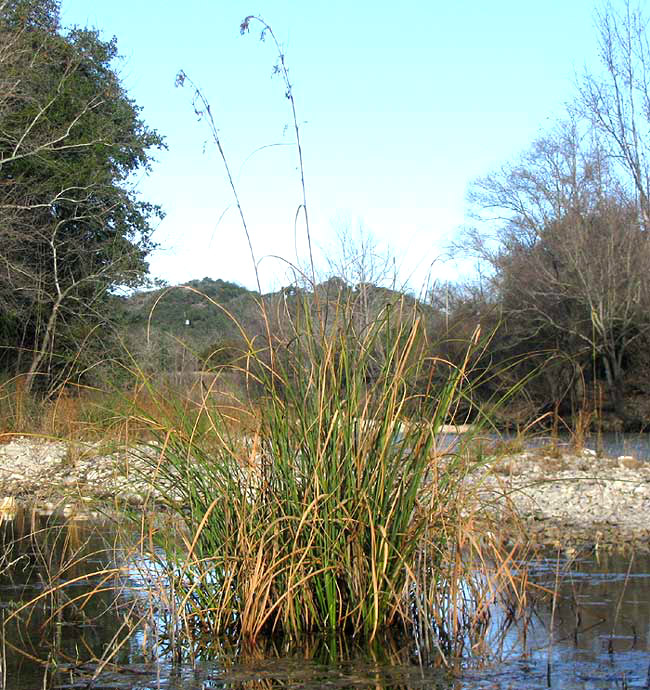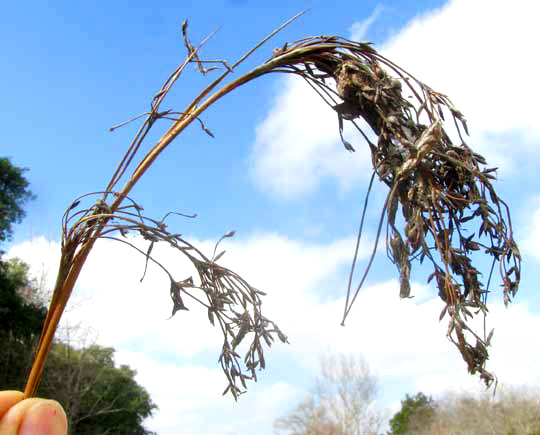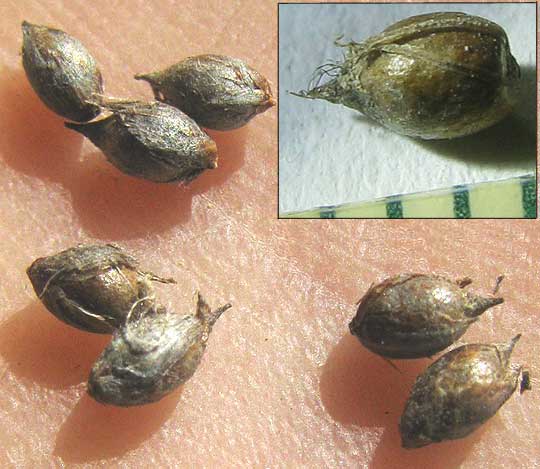Excerpts from Jim Conrad's
Naturalist Newsletter

from the January 20, 2013 Newsletter issued from the Frio Canyon Nature Education Center in northern Uvalde County, southwestern Texas, on the southern border of the Edwards Plateau; elevation ~1750m (~5750 ft); N29.62°, W99.86°; USA
Sawgrass
In the center of a shallow, stagnate pool beside the little Dry Frio River below the cabin there stands photogenically a clump-forming, grasslike plant lifting its old fruiting heads well above one's head, as shown above. Below you can see a close-up of a dried-up, mostly spent fruiting head:

Small, seed-eating birds such as sparrows and finches have eaten nearly all of what must have been thousands of the heads' tiny, achene-type fruits, but if you look closely you can still find a few grains such as those shown below:

The inset at the upper right shows an achene with its enclosing scales removed, revealing two hairlike "bristles" curving from the achene's base over its rounded surface toward its tip. The scale at the bottom of the inset shows that the achene minus its beak is about 2.3mm long (3/32nds inch).
Seeing the oval achenes with their enclosing scales, it's clear that here we're not dealing with a grass. Achenes of members of the Grass Family are subtended by specialized scales called glumes, lemmas and paleas, which are not in evidence here. This graceful and interesting plant is a member of the Sedge Family, the Cyperaceae, and it's called Sawgrass. In Texas, botanists tend to refer to it as CLADIUM MARISCUS, but the Flora of North America lumps our plants with the Sawgrass we had in the Yucatan, Cladium jamaicense.
Whichever name you use, the great thing about this Sawgrass is that it has a tremendous rooting system that holds the banks and streambeds it occupies in place. Also, the big plants themselves slows flooding water, protecting things downstream from rampaging water. With the anti-erosion service and the way small birds relish the thousands of achene-type fruits it produces, Sawgrass is a valuable citizen here.
This Sawgrass species occurs in coastal counties along the US Gulf Coast, then through Texas to southern New Mexico, then south, as Cladium jamaicense, to northern South America.